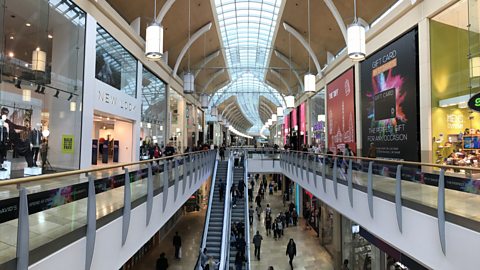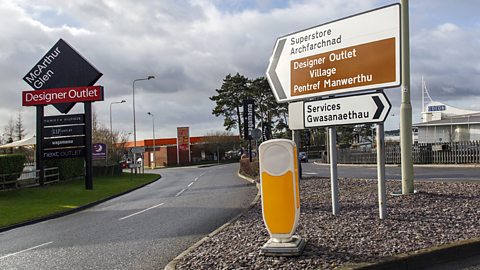How and why is retailing changing?
From necessity to hobby
In the past, people needed to shop in order to purchase goods. The need for goods was based on how frequently they were required and the cost. There are two basic types of goods - convenience goods and comparison goods.
Convenience goods – these are goods that are bought nearly every day such as bread and milk, readily available from the majority of shops. These products are an essential necessity to shoppers because without these, people would struggle to feed themselves.
Comparison goods – these have a higher value and are purchased less often, such as household items, electrical goods, clothes and shoes. People tend to go to several shops to compare products before buying them.
The result of this was that many convenience goods were bought in small local shops such as the butchers, grocers, bakery or local shopping centres. This allowed the development of corner shops and local shops to service the needs of people who were within walking distance of them, in order to get these low cost goods.
Larger Central Business District (CBD) stores would then compete with each other to sell the more expensive comparison goods. This is why in many shopping centres these stores agglomerate Cluster together. so that shoppers can easily compare goods. This happens with shoe shops or clothes shops, for example. Comparison goods often involve a car ride or a trip on public transport to the city centre or CBD.

Today, many people go on shopping excursions, visiting cities such as London, Paris or New York purely for the shopping experience. Modern day shopping centres also have a range of activities such as cinemas, crГЁches and a range of restaurants. This encourages people to make shopping a day-out activity, and for some, shopping is their favourite hobby. As a result the sphere of influence has now grown. This means that people are able and willing to travel much further to shop.
However, when people are buying mainly convenience goods they are not always prepared to travel long distances so the sphere of influence is often much smaller in this case.
Cost and benefit of out-of-town shopping
With relaxed planning laws in the 1980s and the rise of car ownership, the UK Government encouraged retailing to occur on the outskirts of cities. Retailing land and property in the city centre was very expensive, but land on the outskirts was very cheap in comparison. This led to the development of out-of-town shopping centres/malls.
